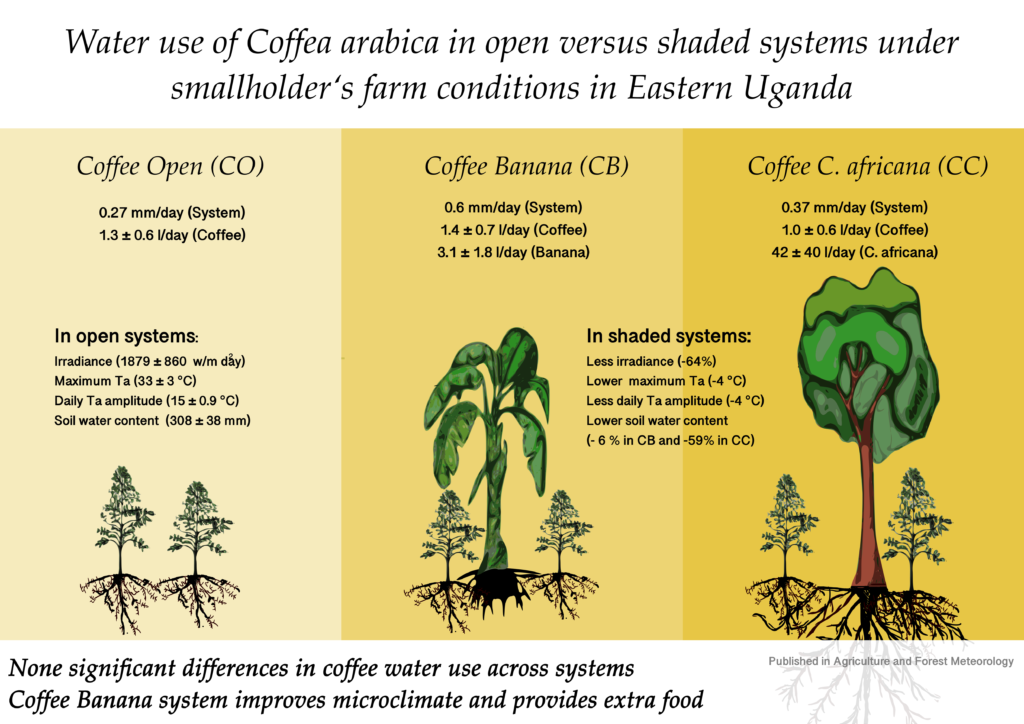
Coffee cultivation is a major source of income in East Africa. Increasing temperatures and water scarcity related to climate change are becoming major challenges for coffee production. Therefore, there is an urgent need for sound scientific understanding of the functioning of current coffee cultivation systems and the potential of agroforestry as an adaptation strategy to climate change. In a smallholder coffee farm on Mt Elgon, Uganda, we assessed the effect of three coffee cultivation systems (i.e., Coffee-Open, Coffee-Banana and Coffee-Cordia) on (i) the coffee cultivation environment (e.g. microclimate and soil moisture), (ii) water consumption of coffee, (iii) water consumption of banana (Musa sp.) and Cordia africana and (iv) water competition or complementary use between coffee and shade tree species. To this end, we monitored sap flux density (Js) (g cm−2 hour-1) of coffee, banana and C. africana from March 2015 to April 2016, using Granier thermal dissipation method, along with microclimate, soil moisture and rainfall. Shaded systems reduced irradiance by 70% in Coffee-Cordia system and 58% in Coffee-Banana system compared to Coffee-Open system. Maximum temperatures and daily temperature amplitude were on average reduced by 4 °C in both shaded systems compared to Coffee-Open system. Soil water content (SWC) in shaded systems was reduced by 59% in Coffee-Cordia and 6% in Coffee-Banana compared to Coffee-Open. Daily water consumption of coffee plants was 1.2 ± 0.64 l d-1 and did not differ between systems. Water use of banana was 3.1 ± 1.8 l d-1 and 42 ± 40 l d-1 by C. africana. Coffee-Banana system had the largest daily transpiration rate, 0.9 ± 0.4 mm d-1 per ground area and 0.6 ± 0.4 mm d-1 per unit leaf area, followed by Coffee-Cordia with 0.37 ± 0.1 mm d-1 (per ground area), 0.36 ± 0.1 mm d-1 (per leaf area) and Coffee-Open 0.24 ± 0.1 mm d-1 (per ground area), 0.27 ± 0.1 mm d-1 (per leaf area). Our results showed that differences in microclimate and SWC between cultivation systems did not influence coffee water use during the monitored year. However, water competition between coffee and shade trees could likely occur in drier years, due to the reduced SWC presently observed in shaded systems. Further research is needed to explore the performance of management practices (mulching, pruning and thinning) in interaction with seasonal weather forecast and appropriate selection of shade species (provision of extra products, reduced water use, fast growth and root zone below 80 cm depth) to match the systems’ water requirements with expected soil water availability.
Find article here